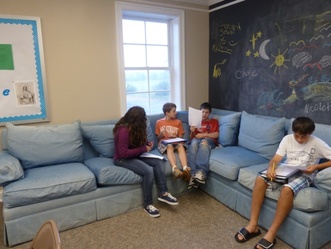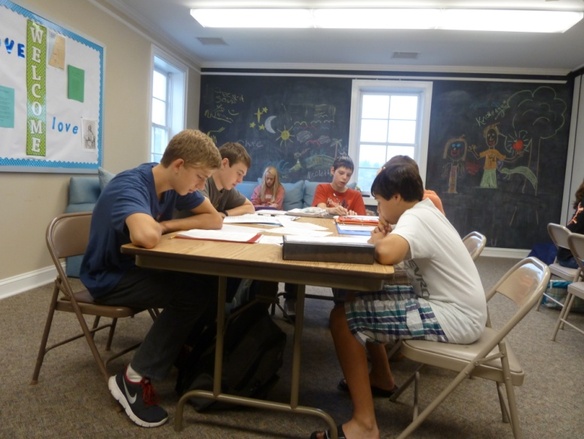|
with Michelle Cameron REVISION, REVISION Today was all about revision. We talked about how revising a work marks the difference between an amateur and a professional writer, and I shared a couple of pages of my own novel in progress, which has plenty of red marks all over it. I also shared some editorial mark-up symbols, as well as a 2-part blog post that I’ve written on revision. We used the blog post to structure our revision session today.  Phase one of revision is putting the work away and getting some distance from it. We talked about the natural tendency for young writers to procrastinate on their school assignments, but that – eventually – they would see the value in being able to write earlier on, and revisit their work with some objectivity. We then talked about what they need to look for in the content edit stage, or phase two:
 We had one student bring in poetry, and the rules of revision are a little different there. In this first stage, the critique partner focused on:
We split into content edit teams to peer edit one another’s work:
The students worked on the piece, and then conferenced with one another. We talked about the fact that the writer is not required to accept all criticism and must weigh it carefully.  Once that was done, we moved into phase three, or proofreading and line editing. We discussed what they should look for:
With word choices, we discussed “killing your darlings” – those wonderful phrases that make us dance in our chair when we write them, but which distract rather than add from a piece of work. Again, poetry was a little different. Capitalization became a more important issue, as did cadence and rhythm. The proofreading/line edit teams were:
Once that stage was done, the final stage, reading the work aloud, was done by the writers themselves. We talked about trusting your voice to find problems your brain doesn’t necessarily find – and that, if you do nothing else with an assignment that you’ve waited to work on, reading it aloud when you’re done is a good way to turn up problems and errors. PICK THREEOnce they were done, we had some time left over, so we did a quick pick three prompt. The writers were given three words, and had two minutes to try and trade them with one another. Then they began (though they didn’t finish) stories using these three words. THE ONE PAGE TENDENCYOne other thing we discussed today is their tendency to write a page or half a page and then stop writing. We discussed what the true length of short stories, novellas, and novels should be, and that they need to complete a work when they’re given time to do so at home. I hope to see them take this seriously in the coming weeks!
HOMEWORK With a week off next week, they have two assignments:
Have a great Columbus Day, everyone! Comments are closed.
|
Categories
All
Archives
May 2016
|


 RSS Feed
RSS Feed